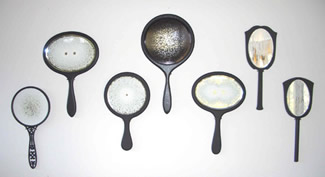The numbers continue to dwindle. AIDS isn’t what it used to
be. There are buzzier causes: ALS, prostate cancer, refugee resettlement.
Staffs at the past two schools where I’ve worked attend charity dinners and
auctions each September to support research for medical conditions a few of our
students have battled. There are other banners I want to get behind, like
mental health, everything pertaining to animals and the environment and, yes,
refugees.
But AIDS remains closest to my heart. I first grappled with
coming out back when Geraldo Rivera reported about GRID—Gay-Related Immune
Deficiency—on “20/20”. It was the acronym that preceded AIDS, with a heavy
emphasis on “gay”. Gay men were getting sick; gay men were dying. I signed up
to volunteer with the AIDS Resource Center in Dallas before I’d ever so much as
kissed a boy. I was profoundly impacted by Randy Shilts’ agonizing account of
the early years of the AIDS crisis (And
the Band Played on) and the haunting, Oscar-winning documentary “Common
Threads: Stories from the AIDS Quilt” before I’d ever had a date. Gay
may technically be synonymous with happy, but in those days it was heavily
weighted with fear, maybe even death. AIDS will always play a part in my
identity as a gay man.
 |
| I made sure to avoid any proximity to this sign. Just not me. |
And so I showed up at the Roundhouse Community Centre
yesterday for yet another AIDS Walk. I first participated in a walk twenty-six
years ago in Los Angeles, a decidedly grimmer time when the people with full-on
AIDS sat in wheelchairs pushed by loved ones. Some bravely walked, with or
without a cane. We knew who had it. Their faces were gaunt, unnaturally tanned
and KS lesions dotted their skin. I remember trying to project hope. You can beat this. The AZT will work. The
cure is coming. But my sunshiny disposition faded after seeing the ravaged
bodies of so many men in their prime, from watching mothers push their
thirty-year-old sons, from seeing the inequity as one healthy-looking “longtime
companion” supported the weakened one.
So much has changed. In the past year I’ve briefly dated two
HIV+ men, each “undetectable”. They are among the lucky few who were diagnosed
thirty years ago and somehow managed to survive the darkest years. They take
their meds but show none of what once were the telltale signs of AIDS. They
manage their condition. The hope now is real. Still, it’s not like diabetes or
epilepsy. There remains a sense of shame and even shunning from potential
partners. As I listened to both of them tell their story, one was wracked with
guilt while the other’s language was loaded with affirmations delivered
defensively rather than convincingly. The mental toll remains great.
In truth, I’m out of touch about what it means to live with
HIV or AIDS today. I don’t have a clue what the needs are. I don’t know what is
within reach and what remains a loftier goal in terms of medical research.
Where are things at in terms of a vaccine? Why won’t my medical insurance cover
PrEP (Pre-Exposure Prophylaxis)? What are the inequities regarding prevention,
detection and treatment in developing countries?
How did I become so removed? Why did we stop rallying? Where
did everyone go? Thousands turned out for AIDS Walks in the early ‘90s. In
recent years, only a few hundred show up. Contrast this with the fact that,
according to the CBC, “hundreds of thousands” showed up for the Pride parade in
Vancouver only seven weeks ago. Something seems amiss.
I need to re-educate myself as to where things are at
regarding AIDS. I need a better sense of how the donations help. Despite my
ignorance, I know I must continue to participate in this annual event. For me,
the AIDS Walk is a meditative time when I honor the thousands who died from
AIDS in bleaker times. Knowing that HIV is no longer a death sentence makes it
more critical that I remember friends whose bodies and minds battled
desperately and ultimately futilely and who died at twenty-eight, at thirty-five,
at forty-one. I continue to mourn the passing of Stephen, Don, Farrell, Steve,
Greg and Jose. The anger is gone but the tragedy only feels greater. All their
potential wiped away. All so unnecessary.
I keep hoping the number of walkers will stabilize and that
more gay men will show up again to reflect and remember. Pride celebrations
offer more opportunities to ogle glamorous drag queens and ripped studs in
Speedos. Pride leaves many feeling good, but the AIDS Walk stirs trickier
emotions and commemorates an era that must not be forgotten.





